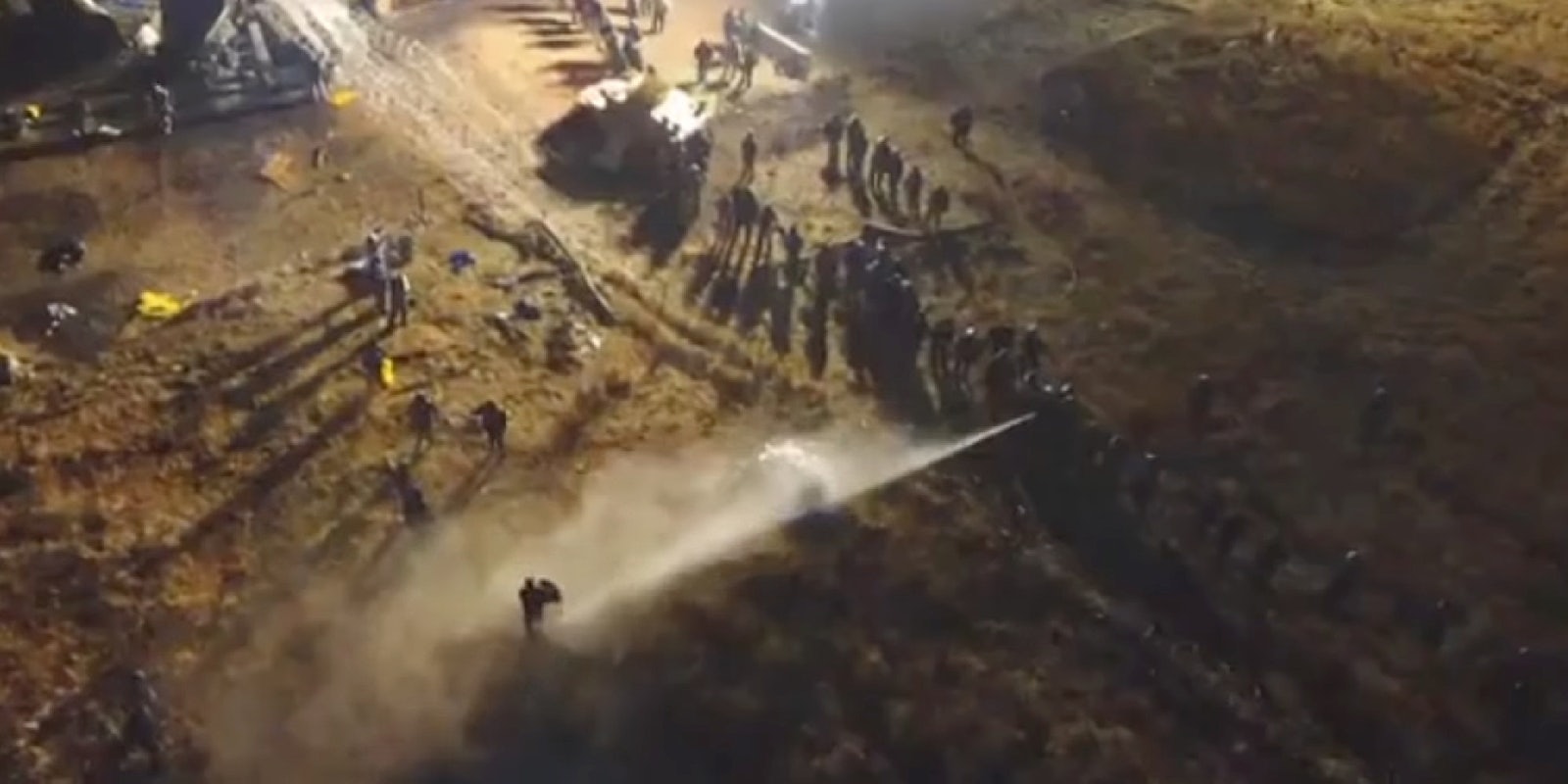As temperatures plummeted as low as 23 degrees Fahrenheit in North Dakota Sunday night, the stand off at Standing Rock escalated significantly when police deployed water cannons and tear gas against unarmed protesters.
The recent clash happened as anti-pipeline activists attempted to move two burnt-out trucks that had formed a barricade from Backwater Bridge on State Highway 1806, which leads directly to the nearby city of Bismarck.
“The purpose of this action was to do something to remove that barricade because it’s dangerous,” one demonstrator told the Guardian, “that barricade poses a danger not just to everyone at the camp, but also to Cannon Ball and other communities that are south.”
Around 100 protesters were initially involved in this maneuver and one of the trucks had been removed when police reacted to this with force.
Drone footage showing water cannons being used on water protectors
— Petty Is Praxis (@rtyson82) November 21, 2016
At the end of the clip, they try to shoot drone w/ water cannon#NoDAPL pic.twitter.com/N0S1Sic2TQ
Morton County Sheriff’s Department forwarded an alternative narrative, alleging that officers were attacked and “had rocks thrown at them” as they attempted to manage an estimated 400 demonstrators who wanted to cross the bridge.
At least four activists reported being hit by rubber bullets, and a local gym in the nearby town of Cannon Ball had to be opened to treat drenched protesters as well deliver medical assistance to demonstrators affected by tear gas. Other protesters reported being hit with percussion grenades.
https://twitter.com/RuthHHopkins/status/800543399606501376
The increasingly aggressive stance of law enforcement at the Standing Rock camp can be marked from August, when a state of emergency was declared by North Dakota Governor Jack Dalrymple. This then provoked the County Sheriff Kyle Kirchmeier to invoke the Emergency Management Assistance Compact, to draw on resources from the police departments in six neighboring states. This force has deployed tear gas, tasers and pepper spray among other weapons in an operation that has seen around 400 demonstrators arrested.
For over six months, indigenous Sioux protesters and environmental activists have sought to put a halt to the development of the Dakota Access Pipeline by facing down the Texas-based oil company behind the plans, Energy Transfer Partners.
The underlying controversy is that the pipeline, which if completed will transport nearly half a million barrels of oil per day, will cross the Missouri River less than a mile upstream from the Standing Rock Reservation. For the Sioux who live there, the river is an essential drinking water resource—one spill would be devastating.
The demonstrations, which have been met with widespread support online, have so far managed to somewhat slow building progress on the $3.78 billion project. Although despite being told by the Army Corps of Engineers to halt construction until a permit to drill under the river is granted, the Texas firm have continued work.


